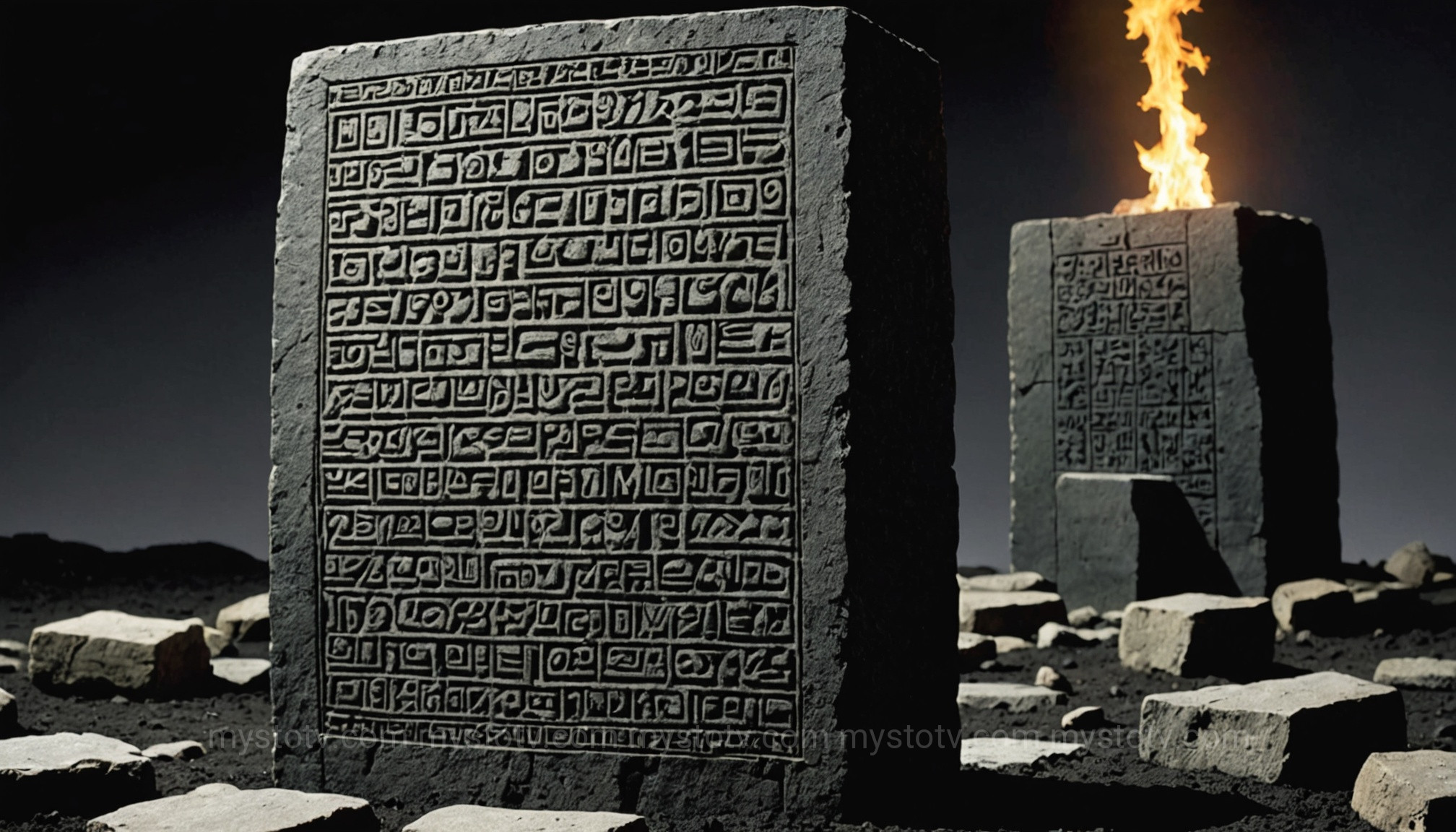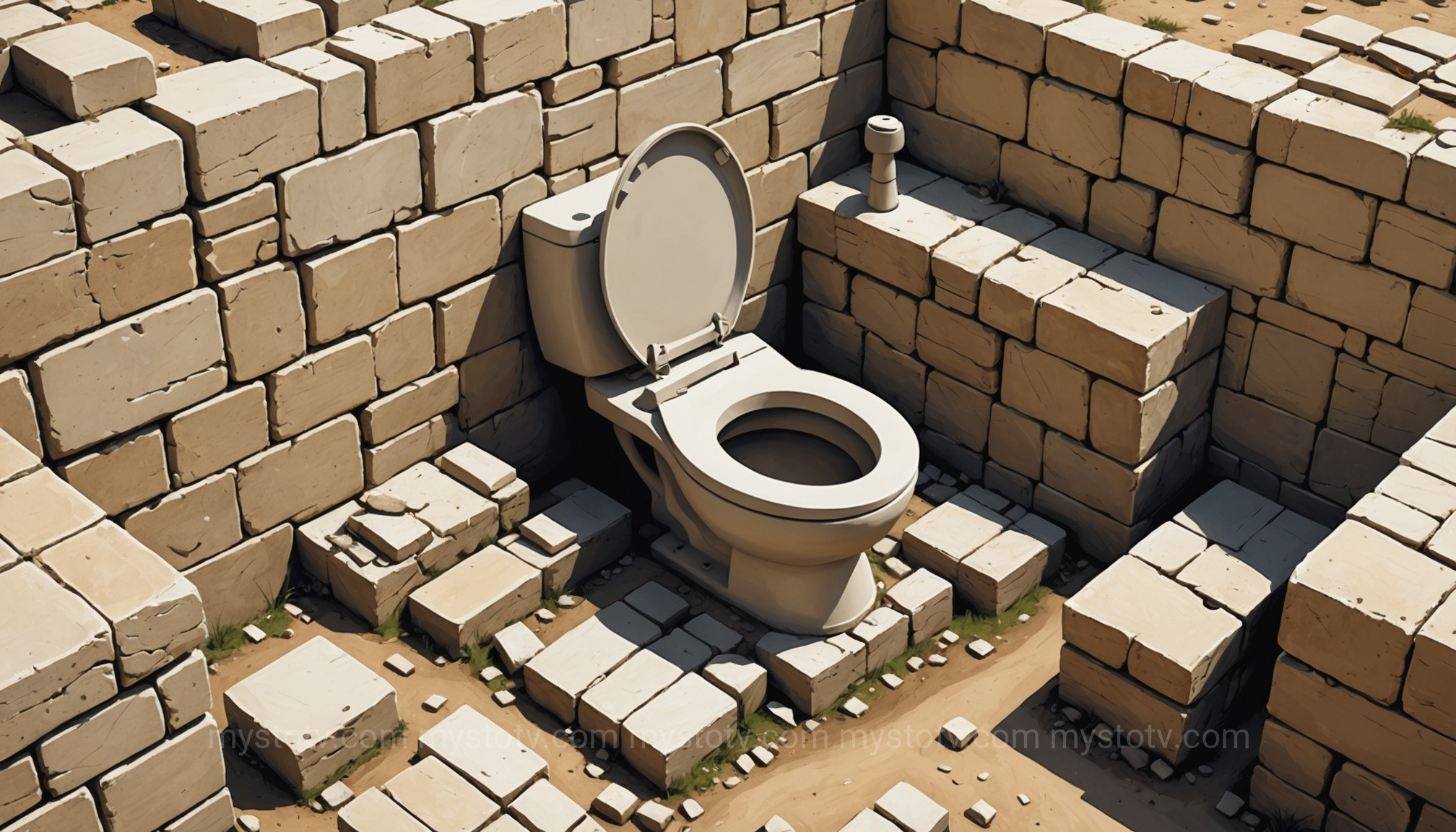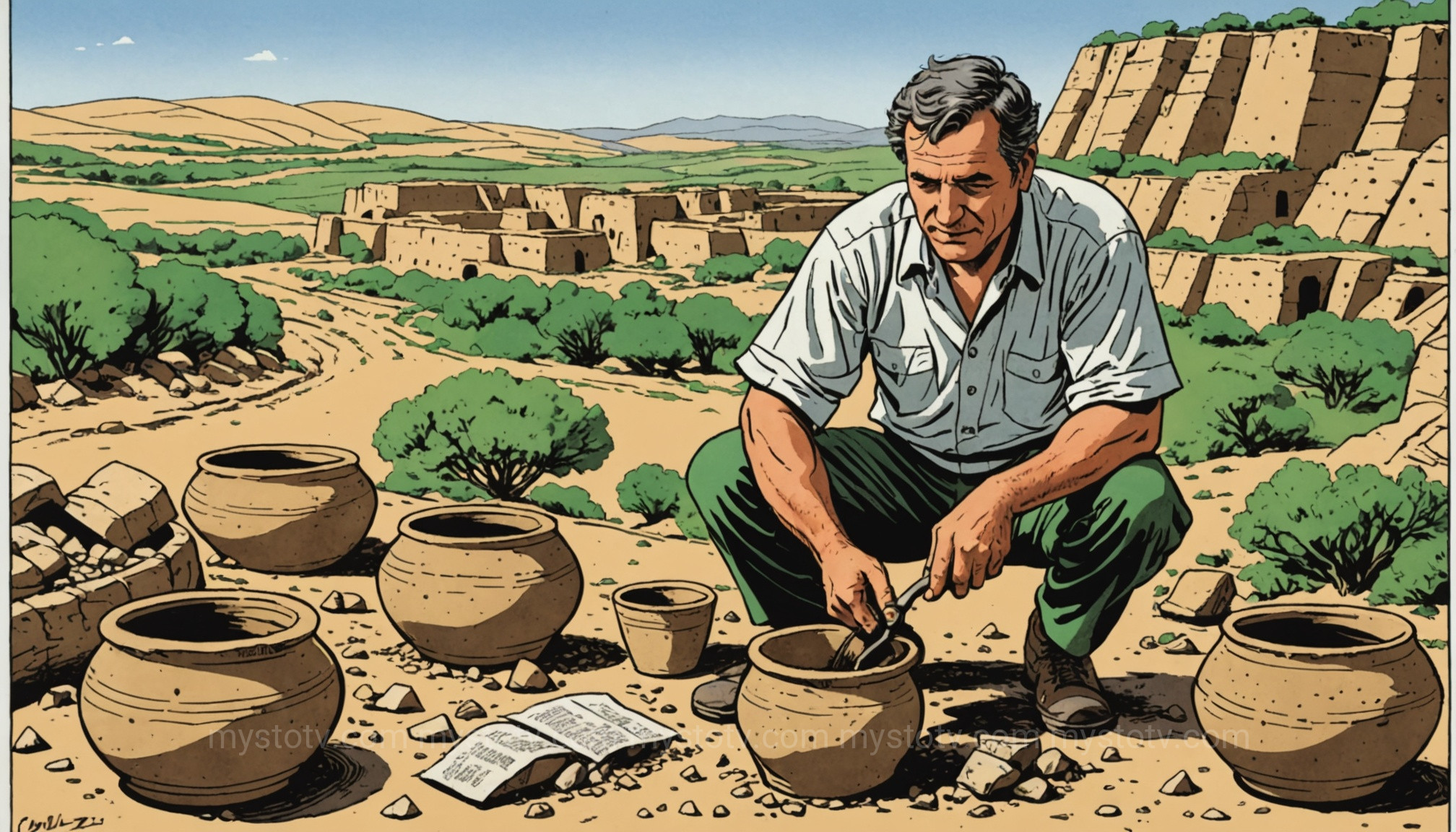There's a unique feeling you get when walking the ancient, stone-paved streets of Jerusalem or standing on a hill overlooking the Sea of Galilee. It’s a sense of profound, layered history, a feeling that every handful of dust could tell a story spanning millennia. I remember kicking a loose stone on a path near the City of David and wondering, "Who was the last person to touch this? A Roman soldier? A Judean pilgrim? A Canaanite trader?" This tangible connection to the past is what makes this land so magnetic. While we can wonder, it's the meticulous work of scientists and historians that provides the answers. More than anyone, it’s what israeli archaeologists discover that transforms these feelings into facts, pulling concrete evidence from the soil and rewriting what we thought we knew about human history.
Contents
- 1 The 'House of David' Stele: What Israeli Archaeologists Discover That Vindicates a King
- 2 The Pilate Stone: How Israeli Archaeologists Discover Proof of a Biblical Figure
- 3 An Ancient Commode: What Israeli Archaeologists Discover About Daily Life in Biblical Times
- 4 The Oldest Wine in the Near East: How Israeli Archaeologists Discover a 7,000-Year-Old Social Tradition
- 5 A 1.5-Million-Year-Old Vertebra: What Israeli Archaeologists Discover About Early Human Migration
- 6 Frequently Asked Questions
- 7 References
- 8 Conclusion
The 'House of David' Stele: What Israeli Archaeologists Discover That Vindicates a King

For centuries, the biblical King David was a figure shrouded in faith and legend as much as historical fact. While central to the Abrahamic religions, tangible, extra-biblical proof of his dynasty remained elusive. Skeptics often relegated his kingdom to the realm of mythology, a foundational story rather than a political reality. That all changed in 1993 with a discovery that sent shockwaves through the fields of biblical studies and archaeology.
A Fortuitous Find at Tel Dan
The discovery was, like many great archaeological finds, a matter of chance. A team led by archaeologist Avraham Biran was working at Tel Dan, an ancient city in the far north of Israel. A surveyor on the team, Gila Cook, noticed a basalt stone with unusual markings being used in a secondary wall, likely rebuilt in the 8th century BCE. It was immediately clear this was no ordinary rock. The stone was a fragment of a larger victory stele, or monumental inscription, erected by an Aramean king to commemorate his victory over the Israelites.
Deciphering the Aramaic Inscription
The inscription, written in Old Aramaic, boasted of the king's conquests. While the name of the Aramean king himself is missing (likely Hazael of Damascus), the text details his triumphs over the "King of Israel" and, crucially, the "House of David" (BYTDWD). This was the linchpin. It was the first time the name "David" had been found in any contemporary, non-biblical source from the ancient world. The find Israeli archaeologists discover was not just a name, but a reference to a royal dynasty, a "house," exactly as the Bible describes.
Rewriting the Historical Narrative
The Tel Dan Stele fundamentally altered the debate about the historical David. It provided powerful evidence that, in the 9th century BCE (about 150 years after David’s reign), the kingdom of Judah was known to its enemies as the "House of David." This transformed David from a purely literary or theological figure into a verifiable historical founder of a dynasty recognized by neighboring powers. It demonstrated that his legacy was so potent that the entire Judean kingdom was identified by his name. This single stone shifted the burden of proof from those who believed in a historical David to those who denied his existence.
The Pilate Stone: How Israeli Archaeologists Discover Proof of a Biblical Figure

Pontius Pilate, the Roman prefect of Judaea, is infamous for his role in the trial and crucifixion of Jesus in the New Testament. Like King David, his existence was, for a long time, only attested in textual sources, including the Gospels and the writings of Roman historians like Tacitus. Without physical proof, some scholars questioned whether he was a real historical governor or a later literary invention. In 1961, a team of Italian archaeologists sponsored by the Israel Museum made a discovery that settled the matter for good.
Unearthing a Roman Theater in Caesarea
Archaeologists led by Dr. Antonio Frova were excavating the grand Roman theater at Caesarea Maritima, the Roman administrative capital of Judaea on the Mediterranean coast. While clearing rubble from a staircase, they overturned a limestone block. The stone had been reused as a step, its original face hidden from view. When they flipped it over, they found a partially damaged but clearly legible Latin inscription.
An Inscription Hiding in Plain Sight
The inscription was part of a dedication for a building or temple, likely in honor of the Emperor Tiberius. The legible text reads: "[...CE]SARIENSIBUS TIBERIEUM [...PON]TIUS PILATUS [...PRAEF]ECTUS IUDAE[A]E." Translated, it says, "To the people of Caesarea, Pontius Pilate, Prefect of Judaea, [has dedicated] a Tiberieum [a temple in honor of Tiberius]." The find Israeli archaeologists discover was unambiguous. Here was the name Pontius Pilate, his official title "Prefect of Judaea," and the context of his rule under Emperor Tiberius, all carved in stone during his lifetime.
Why This Discovery Matters for Historians
The Pilate Stone is a cornerstone of Roman-era archaeology in the region. It provides the only known contemporary, physical evidence of Pontius Pilate’s existence and rule. It confirms his title was Praefectus (Prefect), clarifying a point of debate among historians who had previously relied on later texts that sometimes used the anachronistic title Procurator. This discovery anchors a key figure from the New Testament firmly in the archaeological record, demonstrating that the political world described in the Gospels aligns with the physical evidence found in the ground. It shows how archaeology can independently verify and add nuance to ancient historical texts.
An Ancient Commode: What Israeli Archaeologists Discover About Daily Life in Biblical Times

History isn't just about kings and conflicts; it's also about how people lived, ate, and managed their daily lives. Archaeological finds that illuminate these mundane details are often just as revolutionary as those that confirm famous names. In 2021, during a salvage excavation in the Armon Hanatziv neighborhood of Jerusalem, the Israel Antiquities Authority (IAA) announced a find that flushed away preconceived notions of sanitation in the First Temple period. This is a perfect example of what israeli archaeologists discover that paints a more complete picture of the past, including details about daily life in an earlier biblical era.
A Rare Luxury in Iron Age Jerusalem
The team unearthed a private toilet cubicle, part of what was likely a large, ancient royal estate overlooking the City of David and the Temple Mount. The toilet itself was a block of carved limestone with a comfortable, curved seat and a hole in the center. It was positioned over a deep septic tank carved into the bedrock. In an era when most people would have used pits or simply the outdoors, a private, indoor toilet was a symbol of extreme wealth and status. Only a handful of these have ever been found from this period, making this discovery exceptionally rare.
Scientific Analysis of a 2,700-Year-Old Toilet
What makes this discovery truly history-changing is not just the object itself, but the potential for scientific analysis. The septic tank beneath the toilet contained a wealth of information. Archaeologists from the IAA and Tel Aviv University have been analyzing the soil and rock samples from the tank, which contain micro-remains from over 2,700 years ago. This includes ancient pollen, parasites, and food residues. This analysis allows researchers to learn about the diet, health, and common diseases of Jerusalem’s elite during the time of the Judean kings.
A Window into the Health and Habits of the Elite
This find opens an unprecedented window into the lifestyles of the ancient upper class. By identifying the eggs of intestinal worms like roundworm and whipworm, scientists can understand the sanitary challenges and diseases they faced, even among the wealthy. By analyzing food remains, they can reconstruct their diet, confirming the biblical accounts of a diet rich in fruits, vegetables, and grains. The find Israeli archaeologists discover is not just a toilet; it's a time capsule of biological information that tells us more about the real, lived experience of people in biblical times than many texts ever could.
The Oldest Wine in the Near East: How Israeli Archaeologists Discover a 7,000-Year-Old Social Tradition

Wine has been central to culture, religion, and society in the Middle East for millennia. But when did large-scale production and consumption truly begin? For a long time, the earliest evidence of wine in the region dated back to around 5,000 years ago. However, a recent discovery pushed that timeline back by thousands of years, revealing a sophisticated wine culture existed far earlier than previously imagined.
Pottery Shards at Ein Zippori
During excavations at the Chalcolithic (Copper Age) site of Ein Zippori in the Galilee, researchers from the IAA and other institutions were examining pottery fragments dating back to between 5800 and 4500 BCE. They noticed molecular residues on the inside of several large ceramic jars. The size and shape of these jars already suggested they were used for storage, but the nature of their contents was a mystery waiting to be solved by modern science.
The Chemical Signature of Ancient Wine
The team used advanced organic residue analysis to examine the molecules absorbed into the pottery's pores. They were looking for the chemical fingerprints of specific substances. What they found was astonishing: clear molecular evidence of tartaric acid and other components characteristic of fermented grapes. This was the unmistakable signature of wine. The analysis, published in 2022, confirmed that these 7,000-year-old jars had once held wine, making it the earliest evidence of wine production ever found in the entire Levant and Near East.
Redefining the Timeline of Viniculture
This is a history-changing discovery because it fundamentally rewrites the timeline for the development of a complex agricultural product. It shows that as early as 7,000 years ago, communities in the region had mastered the cultivation of grapes and the complex process of fermentation, storage, and consumption on a significant scale. It suggests that wine was already an integral part of the economy and social life during the Copper Age. The find israeli archaeologists discover demonstrates that the sophisticated wine culture we associate with later Bronze and Iron Age societies has much deeper, more ancient roots than we ever knew.
A 1.5-Million-Year-Old Vertebra: What Israeli Archaeologists Discover About Early Human Migration

The story of humanity begins in Africa. But the story of how and when our ancient ancestors first migrated out of Africa is a complex puzzle with many missing pieces. For decades, the Dmanisi site in the Republic of Georgia, with its 1.8-million-year-old fossils, was considered evidence of a single, early wave of migration. A discovery in Israel’s Jordan Valley, however, suggests a much more complex and prolonged story of dispersal.
Digging Deep in the Jordan Valley at 'Ubeidiya
The 'Ubeidiya archaeological site, located near the Sea of Galilee, has been excavated for decades. It is one of the oldest prehistoric sites outside of Africa, preserving layers of earth containing stone tools and animal fossils from the early Pleistocene epoch. While excavating a layer dated to approximately 1.5 million years ago, a team from the Israel Antiquities Authority and Bar-Ilan University found something incredibly small but profoundly important: a single human vertebra.
Identifying a Prehistoric Child's Bone
The fossil was identified as a lumbar vertebra from the lower back of a hominin child, estimated to be between 6 and 12 years old. Its size and shape were compared to fossils of other early human species, including those from Africa and the Dmanisi site. The analysis, led by Dr. Alon Barash and Professor Ella Been, revealed that the 'Ubeidiya hominin was a very large individual for its time, significantly taller and more robust than the hominins found in Georgia. This suggests it belonged to a different, later species or a different wave of migrants.
Challenging Theories on Hominin Dispersal from Africa
The 'Ubeidiya vertebra challenges the simple, single-wave theory of migration. The fact that the hominins at 'Ubeidiya (1.5 million years ago) were physically different from those at Dmanisi (1.8 million years ago) implies that there were at least two distinct waves of migration out of Africa. The find israeli archaeologists discover shows that different species of early humans, with different body types and likely different adaptations, moved into Eurasia at different times. It adds a crucial data point to the map of early human dispersal, proving that the Levant was a key corridor for multiple, distinct migrations that ultimately led to the populating of the globe.
Frequently Asked Questions
How do archaeologists in Israel date their finds?
Archaeologists use a combination of methods. Stratigraphy is key—the deeper an object is buried, the older it generally is. This is called relative dating. For absolute dating, they use scientific techniques. Radiocarbon dating is used for organic materials (like bone, wood, or seeds) up to about 50,000 years old. For older sites like 'Ubeidiya, they use methods like paleomagnetism (analyzing the Earth's magnetic field reversals recorded in rocks) and dating volcanic ash layers found within the stratigraphy.
What is the Israel Antiquities Authority (IAA)?
The Israel Antiquities Authority (IAA) is the governmental body responsible for overseeing all archaeological activity, excavation, preservation, and research in Israel. Any construction project, from a new highway to a private home, must first be assessed by the IAA. If artifacts are found, the IAA conducts a salvage excavation to rescue and study them before construction proceeds. Many of the discoveries mentioned here were made during IAA-led or supervised digs.
Can tourists visit these archaeological sites?
Yes, many of them. The Roman theater at Caesarea Maritima, where the Pilate Stone was found, is a major national park and tourist destination. The city of Tel Dan is also a beautiful nature reserve and archaeological park open to the public. While you can't see the specific toilet in Armon Hanatziv, you can visit the nearby City of David National Park to see extensive First Temple period archaeology. The original artifacts, like the Tel Dan Stele and Pilate Stone, are typically housed and displayed in the Israel Museum in Jerusalem.
References
- Biran, A., and Naveh, J. (1993). An Aramaic Stele Fragment from Tel Dan. Israel Exploration Journal, 43(2/3), 81–98.
- Frova, A. (1961). L'iscrizione di Ponzio Pilato a Cesarea. Rendiconti dell'Istituto Lombardo, Accademia di Scienze e Lettere, 95, 419–434.
- Israel Antiquities Authority. (2021, September 15). A rare 2,700-year-old private toilet was discovered in Jerusalem. [Press Release]. https://www.antiquities.org.il/Article_eng.aspx?sec_id=25&subj_id=240&id=4860
- Godel, M., et al. (2022). Residue analysis of Chalcolithic pottery reveals the earliest wine in the southern Levant. Journal of Archaeological Science: Reports, 41, 103328.
- Barash, A., et al. (2022). The earliest Pleistocene record of a large-bodied hominin from the Levant supports two out-of-Africa dispersal events. Scientific Reports, 12(1), 1272. https://www.nature.com/articles/s41598-022-05712-y
Conclusion
The soil of Israel is more than just earth; it is a dense archive of human civilization. Each shovel-full holds the potential to confirm an ancient text, illuminate a forgotten way of life, or completely re-draw the map of our ancestral journey. The five discoveries explored here are just a snapshot of the revolutionary work being done. From the royal court of the "House of David" to the prehistoric migrations of our earliest relatives, what israeli archaeologists discover continues to provide profound, tangible connections to our shared past. These finds do more than change history books; they deepen our understanding of who we are and the immense, complex journey that led us to the present day. The ground still holds countless secrets, waiting for the next generation of explorers to bring them to light.